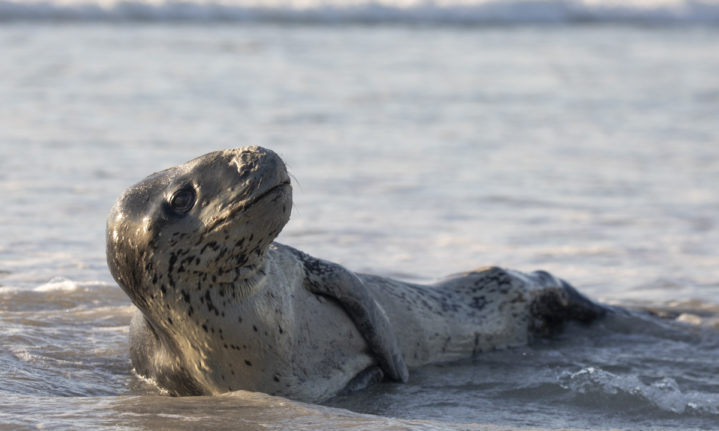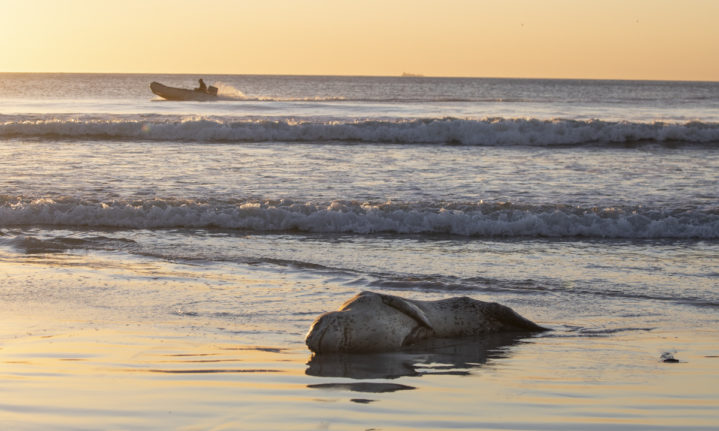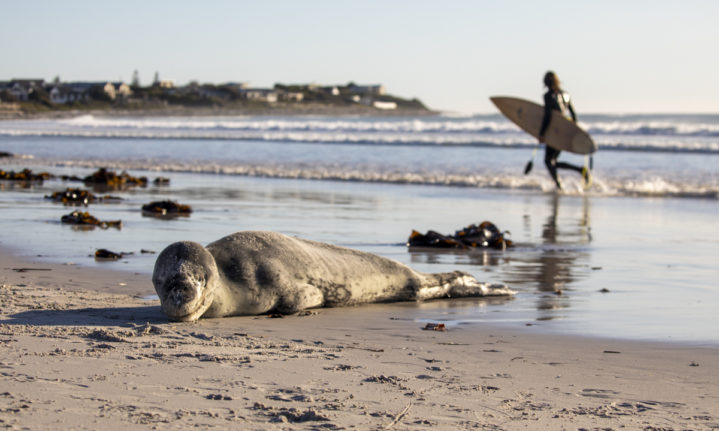A second leopard seal landed on Long Beach, Kommetjie on Friday. The species is rarely seen on South Africa’s shores, having travelled from Antarctic waters. Only a handful have been recorded.
Images by Getaway editor Anton Crone


The leopard seal is only the second to visit Cape shores this winter. It is still present as of Sunday 15 August. The area around the creature has been cordoned off for the seal’s safety as well as that of beach goers. The seal will not be familiar with humans or dogs, and can be very aggressive and unpredictable. Minders have been placed by Shark Spotters in order to and observe protect the seal.
The first leopard seal was seen on the rocks near Kommetjie in mid July. It was then seen on the beach in Yzerfontein towards the end of July. Two Oceans Aquarium successfully tagged this and the previous leopard seal. Both are females and this one has been treated for minor injuries.
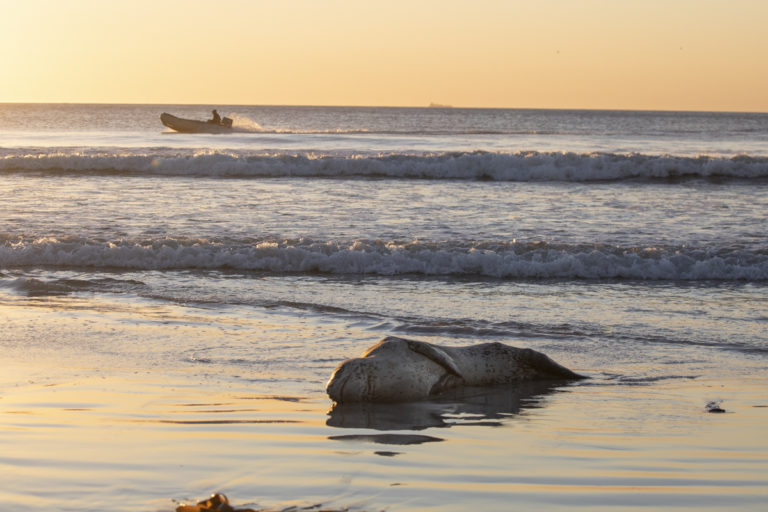
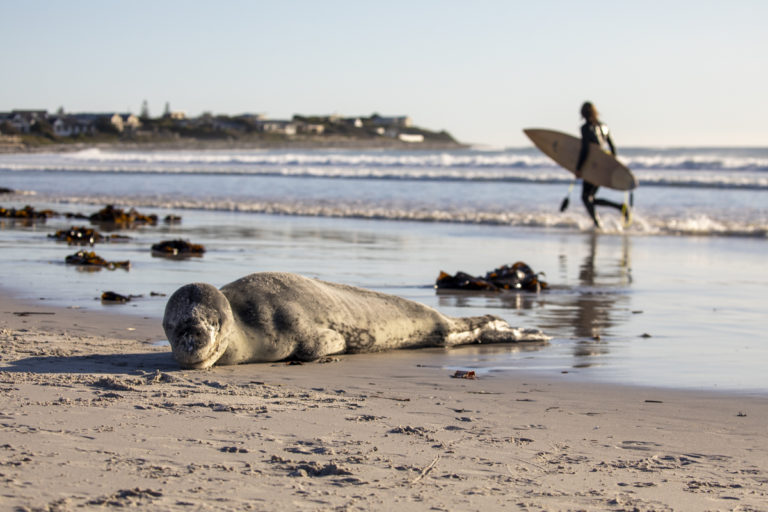
Distribution, behaviour and size
Leopard seals are solitary animals that live in the Antarctic pack ice. Female leopard seals give birth to a single pup on the sea-ice in November after a 9 month gestation, and then return to the ocean to feed. Pups may weigh in excess of 30kg. Adult males weigh as much as 500kg while females weigh around 350kg. They are known to wander widely in the Antarctic waters, and on odd occasions like this can be swept of course or venture further than normal.
Feeding
Leopard seals generally eat anything they can, including penguins, fish, and crustaceans. They also eat the pups of other seal species including crabeater, Weddell and southern fur seals. The seals have unusual teeth for straining krill from the water, as well as sharp canines.









